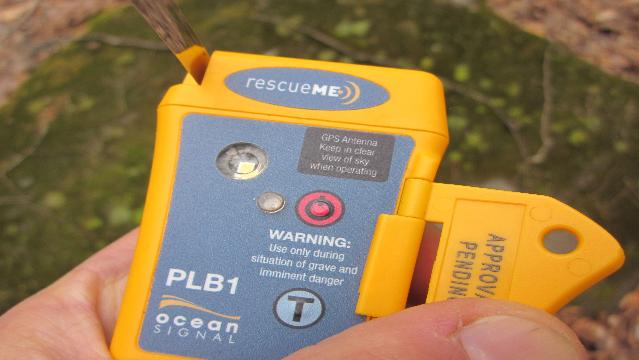In late March, the smallest handheld emergency beacon received FCC approval and went on sale in the US. Just bigger than a Swiss Army Knife, the is a good option for backwoods hikers and explorers who want to lighten their packs and require a last-resort hot-button for getting out of a deadly situation. Made by UK-based and sold in the US by Louisiana-based , the device contains a GPS receiver and a radio transceiver, which sends your location to an international satellite network overhead.
If you’re not 100% familiar with emergency beacons, that’s understandable. New models for hikers have arrived over the last few years, so there are several options. The RescueMe is a personal locator beacon (PLBs), a class of device which has been around for a while and evolved out of the maritime safety arena. It will join other adventure-friendly units by and . In a dire emergency, these send a distress signal to an international system of satellites called COSPAS-SARSAT (the last part stands for “Search and Rescue Satellite Aided Tracking”). Then the signal goes to a relay station which sends your fix to a search and rescue team best positioned to save your life. The service is free; you only pay the initial cost of the device ($250 – $400).
There’s also the , which first came out in late 2011 and uses commercial satellites in the Iridium network. It arguably covers more of the globe than any other device, but has a monthly fee and is bulkier than the PLBs. (We are planning a review of the new over the next few weeks.) There’s also the , which came out in 2007, and uses Globalstar satellites. It doesn’t cover as much of the globe as the other options and requires a monthly service fee.
The RescueMe measures 3.0 by 2.0 by 1.3 inches and weighs 4.1 ounces. It has the longest-lasting battery among the small PLBs, meaning you can keep it in your pack for seven years and it will transmit for 24 hours when activated. Like the ACR and McMurdo, the device sends a second radio signal for search and rescue planes and personnel to home in on you. And like the ACR, it has a bright strobe that flashes constantly to help you be found.
We liked the features of the non-transmitting unit we tested (at least we think it was a dummy unit since there are currently no black helicopters above the camp site). When you need it, a nine-inch antenna pulls out of the unit like a tape measure and retracts easily. And a small spring-loaded door protects buttons from being accidentally pushed. There’s also a test button to fire up the strobe and check the battery level.
How much smaller is the Ocean Signal RescueME? It’s half an ounce lighter than the ACR ResQlink, and four ounces lighter than the McMurdo FastFind. As blogger astutely pointed out before the RescueMe was available for testing, smaller may not mean better if it’s harder to hit the button with “cold and shaking hands” in the ocean. In our tests, we found the controls were normal-sized and easy enough to activate on land. For adventures by foot or kayak, the smallest, lightest possible package does have an obvious benefit; it’s light enough to drop in an inner pocket of your pack and almost forget about until something goes very wrong.
Price: $369


